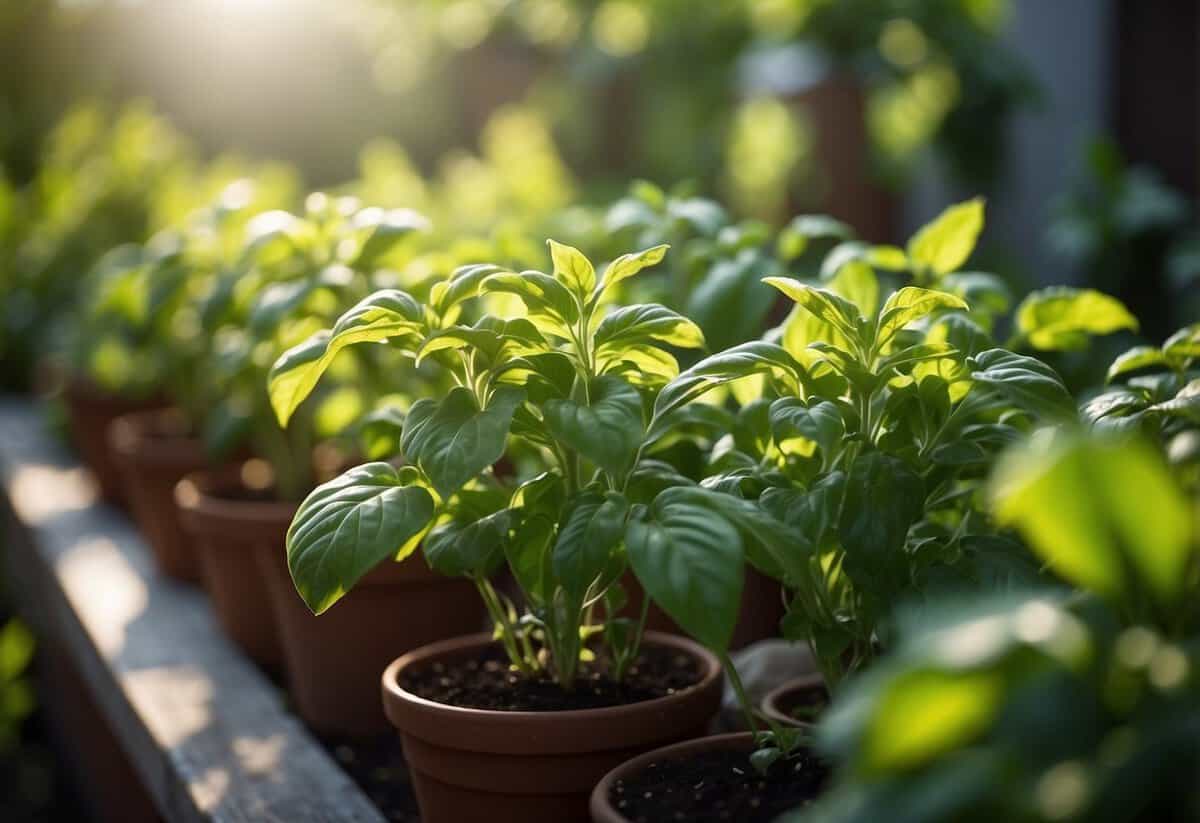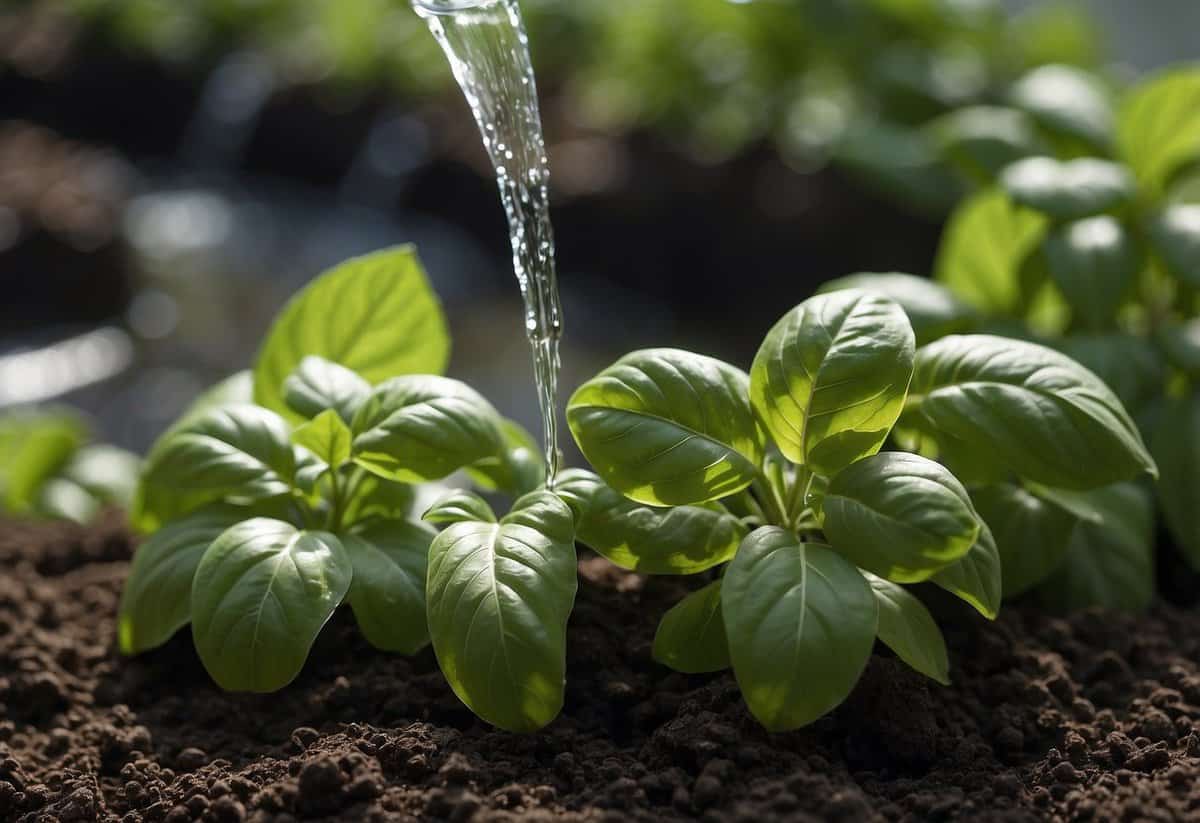Basil Garden Tips: Grow Fresh Herbs at Home
If you love fresh herbs, basil is a great choice to grow at home. It’s versatile, adding flavor to many dishes, and it’s also easy to grow if you know the right tips. Learning how to care for basil will help you enjoy a healthy, abundant harvest.

In this article, you’ll discover practical tips for planting, growing, and harvesting basil. Whether you’re a seasoned gardener or just starting out, these tips will give you the confidence to grow this aromatic herb successfully.
1) Choose a sunny spot

Basil loves the sun. Pick a garden spot where it can soak up at least 6-8 hours of sunlight each day.
If you live in a warm climate, consider some afternoon shade to prevent the plant from wilting. A south-facing balcony is great if you’re growing it in a container.
Remember, the more sun it gets, the more flavorful the leaves will be.
2) Use well-draining soil

Basil loves well-draining soil. Make sure to use a planter with drainage holes. If it doesn’t have any, you might need to drill some.
Adding a couple of inches of gravel at the bottom can also help with drainage. This setup prevents water from pooling, which can rot the roots.
For more tips, you can check out how to grow big, bushy basil.
3) Water Consistently but Not Too Much

Watering your basil plant properly is key to its health. Too much water can cause root rot, while too little can make it wilt. Check the soil to see if it’s dry about 2 inches deep before watering.
If you’re using a pot, make sure it has good drainage. Poking holes in the soil can help it dry out faster. This way, you avoid soggy roots and keep your basil happy and growing strong. For more tips, visit overwatered basil.
4) Harvest leaves regularly

Make sure to harvest basil leaves frequently. This keeps the plant healthy and encourages more growth.
It’s best to pick leaves from the top of the plant. Doing this helps the basil stay bushy and full.
Try to harvest first thing in the morning. The leaves are juiciest at that time.
For larger harvests, cut back an entire stem. This can help your basil plant grow even more leaves. Find more tips on how to harvest basil.
5) Pinch Back Flowers to Encourage Growth

Pinching back flowers is a great way to help your basil plant grow more leaves.
When you see flower buds starting to form, pinch them off right away.
This stops the plant from putting energy into making seeds. Instead, it will focus on growing more leaves, which you can use for cooking.
Check your plants often and keep pinching off those flowers. This will keep your basil plant lush and full.
For more details, you can check out how to quickly pinch back basil for additional growth.
6) Use Organic Fertilizer

Using organic fertilizer keeps your basil healthy and the environment safe. You can try a mix with kelp meal, cottonseed meal, and bone meal. This combination boosts leafy growth, root development, and overall plant health.
Spread the fertilizer lightly and mix it into the soil. Water thoroughly after applying to prevent any risk of burning your basil plants.
7) Mulch to Retain Moisture

To keep your basil garden happy, mulch can be a game changer. Mulch acts like a blanket for your soil, locking in moisture. This means you’ll water less often and your basil plants will stay hydrated longer.
A good depth to aim for is between 2 to 4 inches. This depth prevents water evaporation while still allowing rainwater to reach the soil.
Consider using materials like straw or compost. Straw is lightweight and easy to spread, and compost helps regulate soil temperature. You can explore options like Coco Fiber Mulch for both moisture retention and soil improvements.
8) Rotate plants annually

Rotating basil and other plants each year helps keep your garden healthy. By not planting basil in the same spot every year, you can reduce soil-born pests and diseases.
This practice also prevents soil nutrient depletion. To learn more, you can check out tips from Bunny’s Garden. Remember, moving your crops keeps your garden vibrant and productive.
9) Protect from pests

Keep pests away by removing larger bugs by hand. For smaller pests, use a water hose to spray them off.
Planting companion plants like marigolds and chives can confuse and repel pests. To defend naturally, create a solution with dish soap and essential oils and spray it on the basil leaves once a week.
Use insecticidal soaps or neem oil for more persistent pests. Always follow the product’s instructions.
10) Grow in containers for easy access

Growing basil in containers makes it easy to access fresh leaves when cooking. Choose pots that are at least 8 inches deep to provide enough room for the roots to grow.
Water your basil when the top inch of soil feels dry. Place the pots on a sunny patio or windowsill for the best results. Regularly prune the plants to encourage bushy growth.
By growing basil in containers, you can easily bring them inside during cold weather to extend their growing season.
Choosing the Right Location

Basil thrives in specific conditions to grow strong and healthy. Focus on providing the right sunlight and soil to ensure your basil flourishes.
Sunlight Requirements
Basil needs plenty of sunlight to grow well. Aim to plant your basil in a spot that gets at least six to eight hours of direct sun each day. If your basil doesn’t receive enough light, it may grow tall and thin, producing fewer leaves. This might make your plant look less lush and can reduce its flavor and aroma.
If you’re growing basil on a balcony or in a garden, ensure the space is well-exposed to sunlight. Avoid shady spots, as basil doesn’t do well in shade. It’s also important to consider the seasonal changes and position your basil where it will get maximum sunlight throughout the year.
Soil Conditions
The soil you use for basil should be well-draining and rich in nutrients. Basil prefers soil with a neutral pH level, ideally between 6.0 and 7.0. This helps the plant absorb nutrients effectively.
You can prepare the soil by mixing it with compost or organic matter to boost its fertility. Ensure the soil remains moist but not overly wet because basil needs consistent watering but excess water can lead to root rot. Good air circulation around the plants is also crucial to prevent diseases.
If planting in pots, choose a pot with drainage holes to prevent water from accumulating. Repotting basil into small to medium-sized pots can help manage soil moisture better.
Planting and Care Tips

Growing basil successfully involves paying attention to specific planting techniques, watering practices, and proper pruning and harvesting methods. By following these tips, you can ensure your basil plants thrive.
Planting Techniques
Basil grows best in warm temperatures and well-drained soil. Begin by starting seeds indoors 6 to 8 weeks before your area’s last frost date. Transplant them outside when nighttime temperatures stay above 50°F (10°C). This usually happens in early spring or late spring, depending on your location.
When planting, choose a spot that gets at least 6 to 8 hours of sunlight daily. Basil prefers rich, organic soil, so mix some compost into the garden bed before planting. Plant basil seeds about 1/4 inch deep and space them 12 to 18 inches apart.
Watering Practices
Proper watering is crucial for basil’s health. Water the soil, not the leaves, to prevent fungal diseases. A deep soaking method is recommended to encourage strong root growth. If you’re growing basil in containers, be aware that the soil dries out faster than ground soil, so you might need to water more frequently.
Using a drip irrigation system can be very effective. Aim to keep the soil consistently moist but not waterlogged. During hot summer days, you may need to water basil plants once a day, especially if they’re in containers.
Pruning and Harvesting
Pruning basil helps promote a bushy growth and prevents the plant from becoming leggy. Start pruning when the plants are about 6 inches tall. Pinch off the top set of leaves to encourage branching. Regularly removing flowers will also keep the plant producing leaves.
Harvest basil by pinching off the stems just above a pair of leaves. This will encourage new growth and prolong the plant’s productive life. Always harvest from the top of the plant, not the lower leaves, to avoid stunting its growth. By following these methods, you can enjoy a continuous supply of fresh basil throughout the growing season.
For more information on growing basil, visit Farmer’s Almanac or explore The Spruce.







